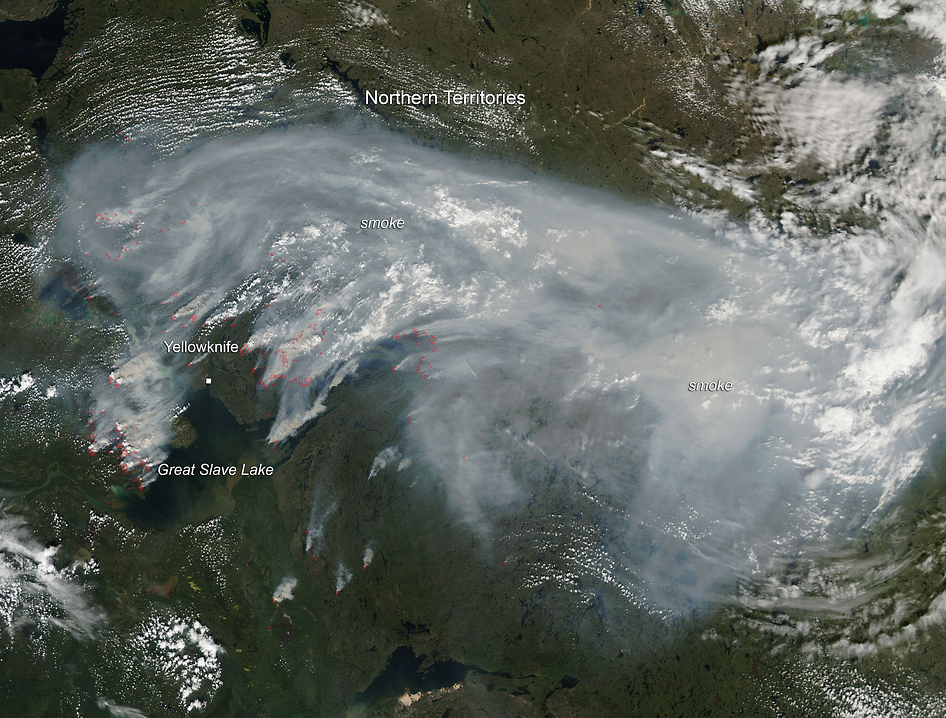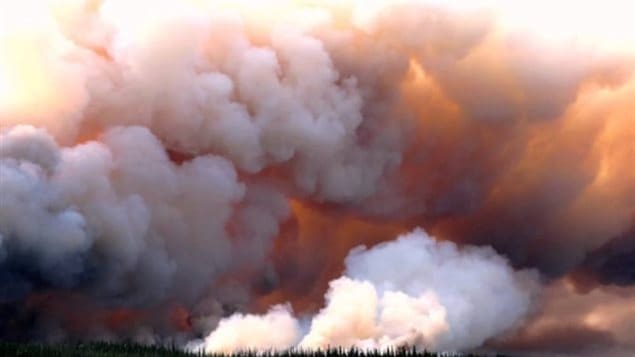Canadian Researchers Discover Wildfire Smoke Impacts Worse Than Thought
 Smoke from the summer 2014 wildfires in Northwest Territories, Canada, as captured from space by NASA
Smoke from the summer 2014 wildfires in Northwest Territories, Canada, as captured from space by NASA
Emergency physician Courtney Howard vividly remembers the summer of 2014. Communities like the one she lives in — Yellowknife, in the Northwest Territories — had finally made it through the dark, cold winter. She was ready for a few months of blue skies and warm weather in the otherwise snowy subarctic of Canada. Then, in mid-June, the fires came. That year in the Northwest Territories, nearly 400 fires burned 3 million hectares (about 11,563 square miles). An additional nearly 1,429 square miles burned farther south in British Columbia. Smoke came at Yellowknife from all directions. “We basically didn’t go out from mid-June through August,” recalls Howard. That made her 1-year-old cranky — and made Howard’s work more difficult.
“We saw so many people with respiratory illnesses,” recalls Howard, who in addition to being an emergency room doctor is president of the Canadian Association of Physicians for the Environment. And with climate change progressing apace, “we felt like this was just the beginning.”
 Fire in Northwest Territories, Canada in summer 2014
Fire in Northwest Territories, Canada in summer 2014
EDIT
Part of what they found was not particularly surprising. In wildfire affected areas, inhaler dispensations went up by 6% even with a small increase of 10 parts per million of fine particulates. That sort of fluctuation can be seen many times throughout a day. Non-wildfire affected areas didn’t see the same jump. But they also found that the spike stayed elevated up to four days after the smoke went away. And they found that on extreme wildfire days, inhaler dispensations went up for everyone studied, by 7% for each increase of 10 parts per million of fine particulates. This means that everyone breathing in smoke may be affected, even hundreds of miles away.
After that initial 2013 study, Henderson and colleagues continued their work, comparing the relatively smoke-free summer of 2016 with the more fiery summers of 2017 and 2018. They found a 40% increase in asthma inhaler demand over the combined wildfire seasons, with about 43,000 extra inhalers given. Doctor visits for asthma surged nearly 20%, which translates into about 10,000 extra visits. Another study led by Henderson found an increase in ear infections for fire-impacted populations, about half of them children under age 10. The team documented the uptick even in Victoria and Vancouver, far removed from fires but still affected by smoke.
EDIT
https://www.invw.org/2020/09/21/can-u-s-health-authorities-learn-from-bcs-experience-with-wildfire-smoke/

